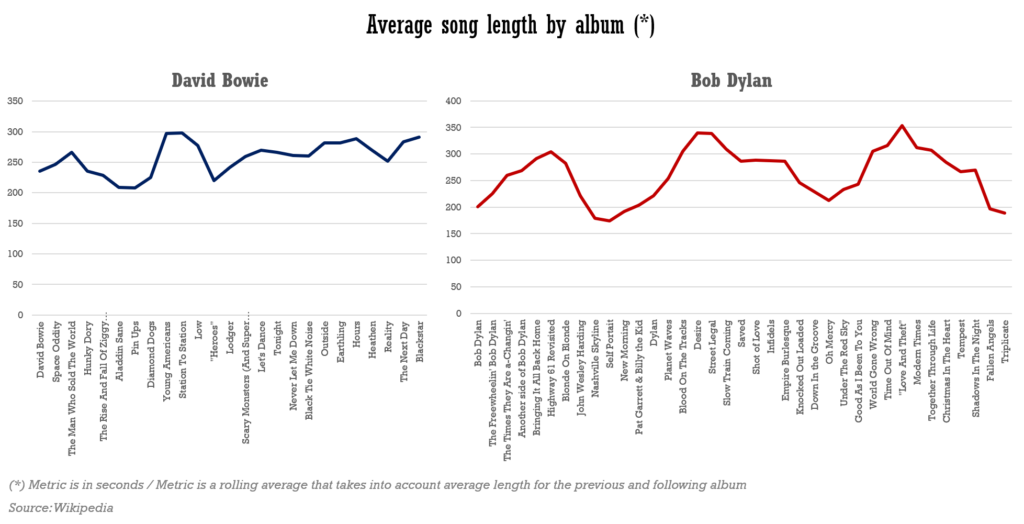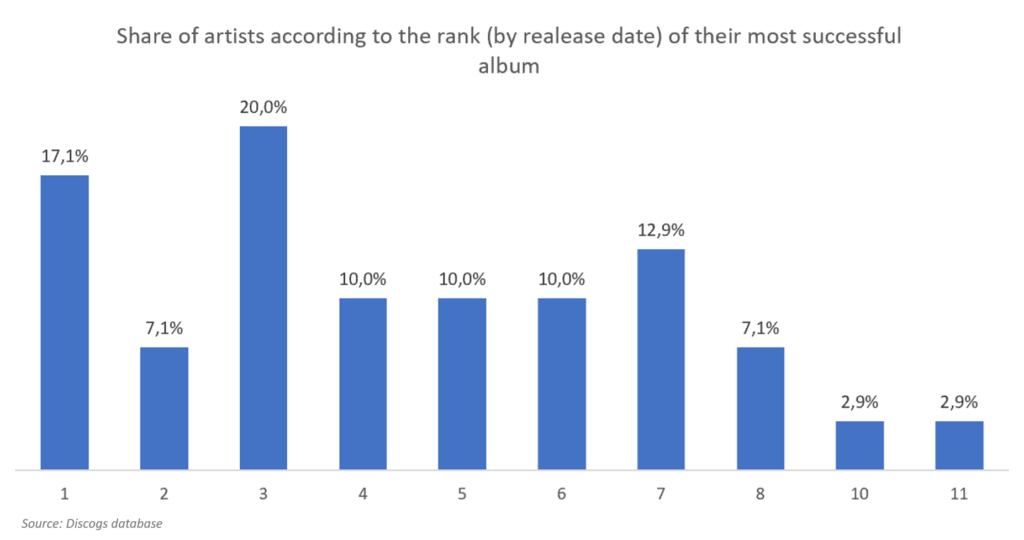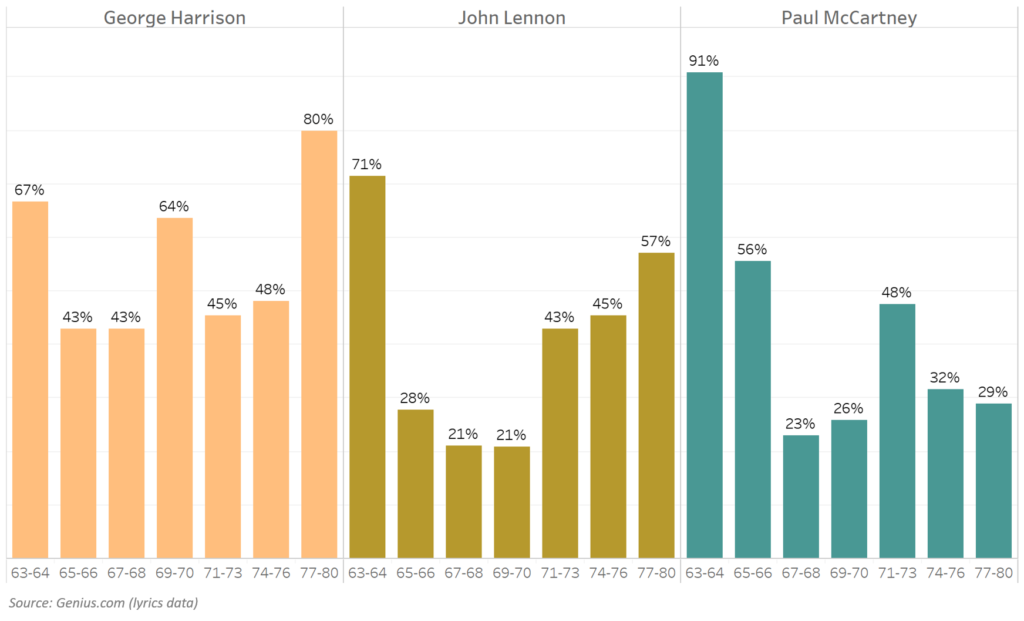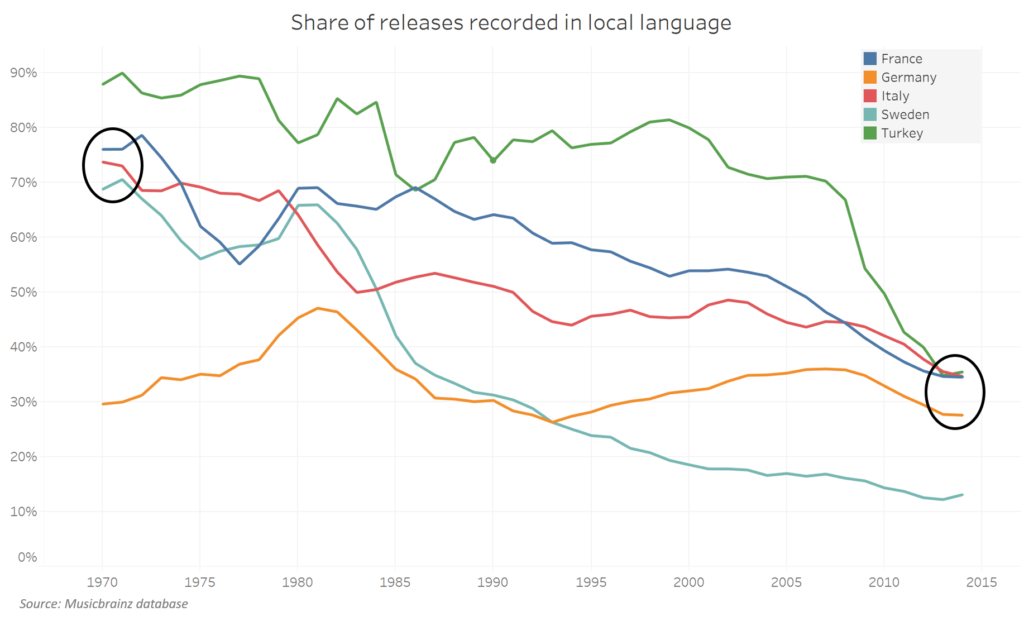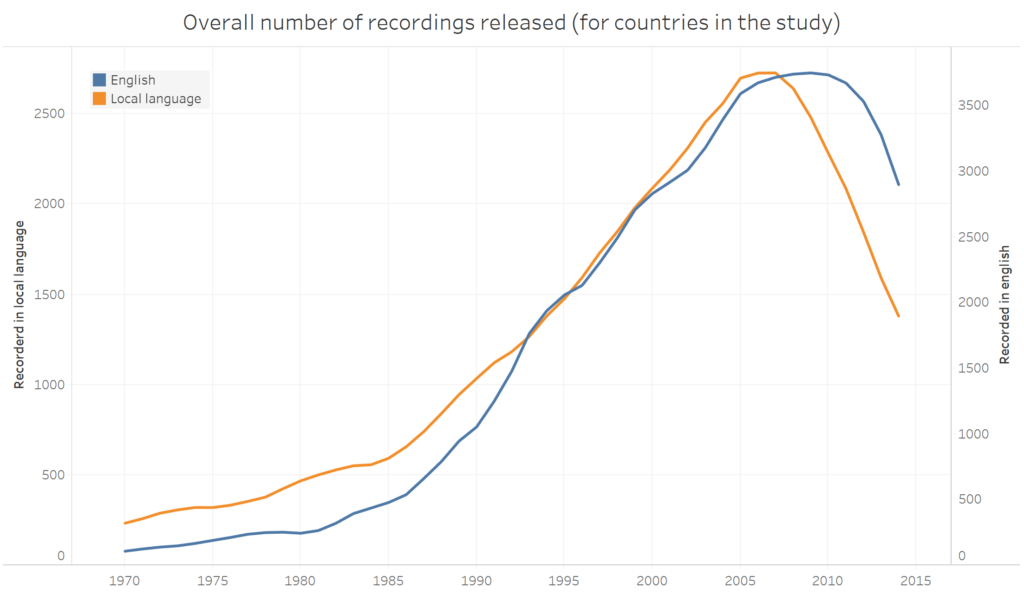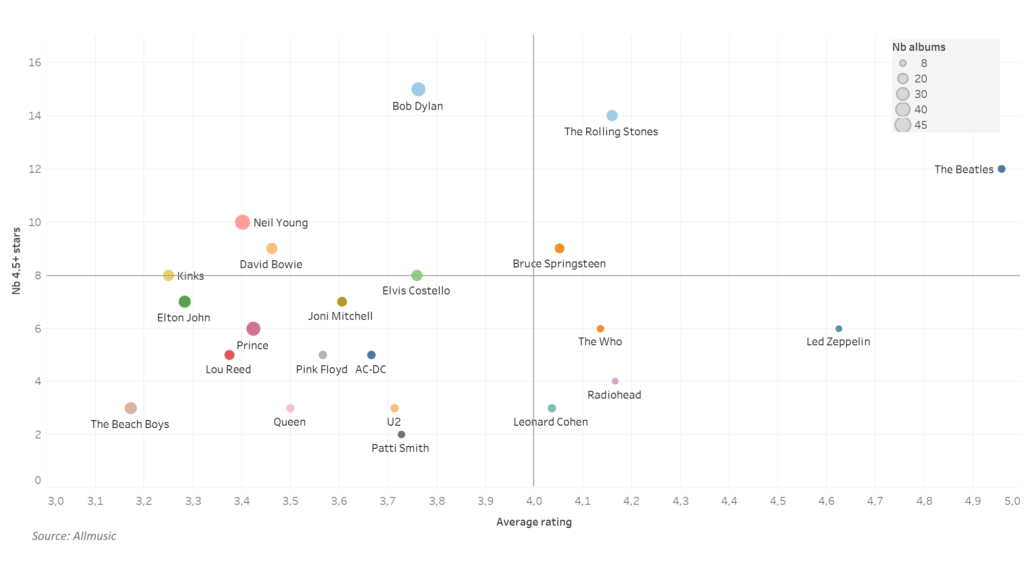To follow up on a previous post regarding David Bowie and Bob Dylan’s song lengths, here is another look at how song lengths can give insights on how artists have changed through time. In the graph below we look at two metrics related to song length: the variance of song lengths over all albums and the slope of the average song length through time in absolute value (based on a linear regression using the method of least squres). Combining these two metrics will enable us to see whether high variance in song length is actually due to a significant change of musical style over the long-term or whether it is just a sign of a constant desire to change some aspects of one’s music but without changing the style of their music in depth.
In order to avoid extreme values (such as the close to 16 mins average on Lou Reed’s « Metal Machine Music ») skewing the overall trends, the values per album were floored at 2:45 mins and capped at 6:30 mins (these values corresponding to the 2,5 and 97,5 percentiles of the values in the scope of this study).
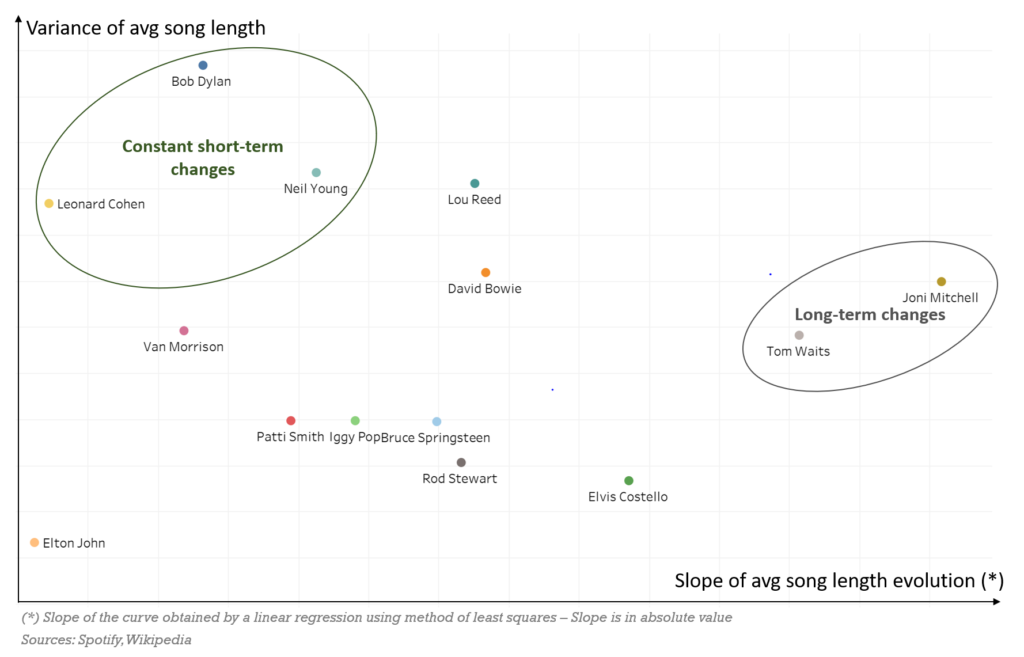
We easily identify Joni Mitchell and Tom Waits as artists that have had changed their musical style quite evidently, taking in strong jazz influences for Mitchell and turning more and more towards blues as he has advanced for Waits. And on the other hand we can identify Bob Dylan or Neil Young as artists that are often changing in appearance, as illustrated by their ability to switch between accoustic and electric from one album to the next, but that have never really turned away from the music that they wrote at their beginnings. In the case of Dylan the similarities in style between « Highway’ 61 Revisited » and « Modern Times » although separated by 40 yers can be a good example of how steady his music’s deep roots are.
We can also single out some other artists, such as Bruce Springsteen who surprisingly shows some signs of long-term change, which comes from the fact he has never gone back to the epic and grandiloquent songwriting of « The Wild, the Innocent and the E Street Shuffle » (and, to some extent, of « Born to Run ») since then. Or Elton John, whose song length’s evolution suggests that he has not had the desire to change neither some aspects nor the fundamental style of his music over the course of his career.
If you wish to see the evolution through time of the average song length for a specific artist, you can find them all here.

